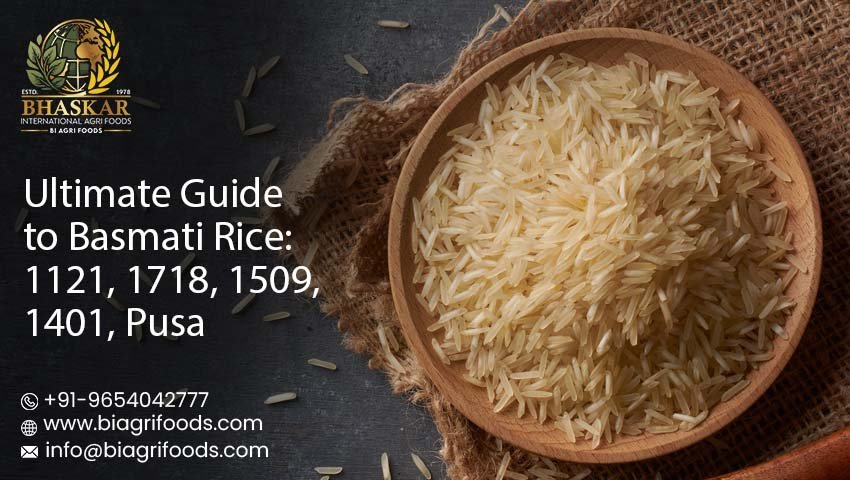
Ultimate Guide to Basmati Rice: 1121, 1718, 1509, 1401, Pusa
Basmati rice is considered the finest rice found across the world. It has been around the kitchen for generations. It is referred to as "The Queen of Rice" because its long silky grains bloom when cooked and the aroma fills the kitchen with a smell that excites the senses and when it is served with dishes it creates a fluffy excellence.
However, one cannot represent all rice that reads "Basmati" as the best. Under the label and on the bag as numbers that barely fit 1121, 1718, 1509, 1401 and Pusa all reference different types each having its own peak and also perform uniquely upon steaming, frying, etc.
What Makes Basmati Rice Special?
- Aroma: The perfume rises effortlessly when you lift the lid, inspired by steamed grains.
- Grain Length: The grains will rest at two or even three times their original size.
- Texture: Rice will stay separate, making it the best.
- Nutrition: Basmati is the quick source of energy, digesting smoothly.
Types of Basmati Rice
- 1121 Basmati Rice
1. Grain Length: Longest of all varieties, often soaring above 8.3 mm.
2. Key Features: Aromatic, non-sticky, and triples in volume with cooking.
3. Best Uses: Perfect for preparing biryani and pulao served on important occasions and festivals due to its superb plate appeal.
- 1718 Basmati Rice
1. Grain Length: Almost of the same length as the 1121, but still retaining long grain status.
2. Key Features: Disease resistance has really been increased-great for growers and kitchens alike.
3. Best Uses: Daily recipes and special celebrations where value meets quality.
- 1509 Basmati Rice
1. Grain Length: Cooks in record time fully respected at 8.2 mm.
2. Key Features: Supple, fluffy, aromatic; speed is its winning argument.
3. Best Uses: Hotels, restaurants, and organizations calling for speed with no trade-offs.
- 1401 Basmati Rice
1. Grain Length: 7.5 to 8mm, or still long according to definition.
2. Key Features: Early maturing, fairly good grain texture, and good quality.
3. Best Uses: Pilafs, fried rice, and beloved classics that need quality rice very quickly.
- Pusa Basmati Rice
1. Grain Length: Slightly shorter than the premium names but still under long.
2. Key Features: A mid-range cost, and yet a lovely aroma, cooks very well.
3. Best Uses: Lunch boxes, everyday cooking, and kitchens where a good budget is not something to waver on this.
Comparison Table of Basmati Rice Varieties
| Variety | Grain Length (mm) | Aroma & Texture | Best Suited For |
| 1121 | 8.3+ | Strong aroma, very fluffy | Premium biryanis, banquets |
| 1718 | 8+ | Balanced aroma, durable | Everyday & festive cooking |
| 1509 | 8.2 | Light, cooks quickly | Hotels & bulk catering |
| 1401 | 7.5-8 | Good aroma, early harvest | Traditional rice dishes |
| Pusa | 7+ | Mild aroma, affordable | Daily home meals |
How to Choose the Right Variety
When selecting variety of Basmati rice, take into consideration following:
- Purpose: If your intention is to make biryani or festive meals, 1121 or 1718 would be suitable rice varieties.
- Costs: If you want to save money while you cook, Pusa or 1401 may be more suitable rice varieties.
- Cooking time: If you want a variety that cooks faster, 1509 would be a good rice choice.
- Aesthetically: If you desire longer grains, 1121 gives the best presentation.
Conclusion
If you require basmati rice in bulk, BI Agri Foods is the leading Basmati Rice Manufacturer, Supplier & Exporter in India. For over four and a half decades we have supplied perfectly milled rice, every kernel a promise kept. Thanks to deep, trust-based ties with farmers and a modern distribution system spanning multiple continents, only rice of the highest standard carries our name.

